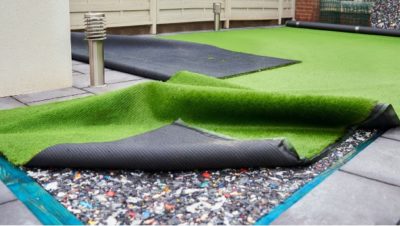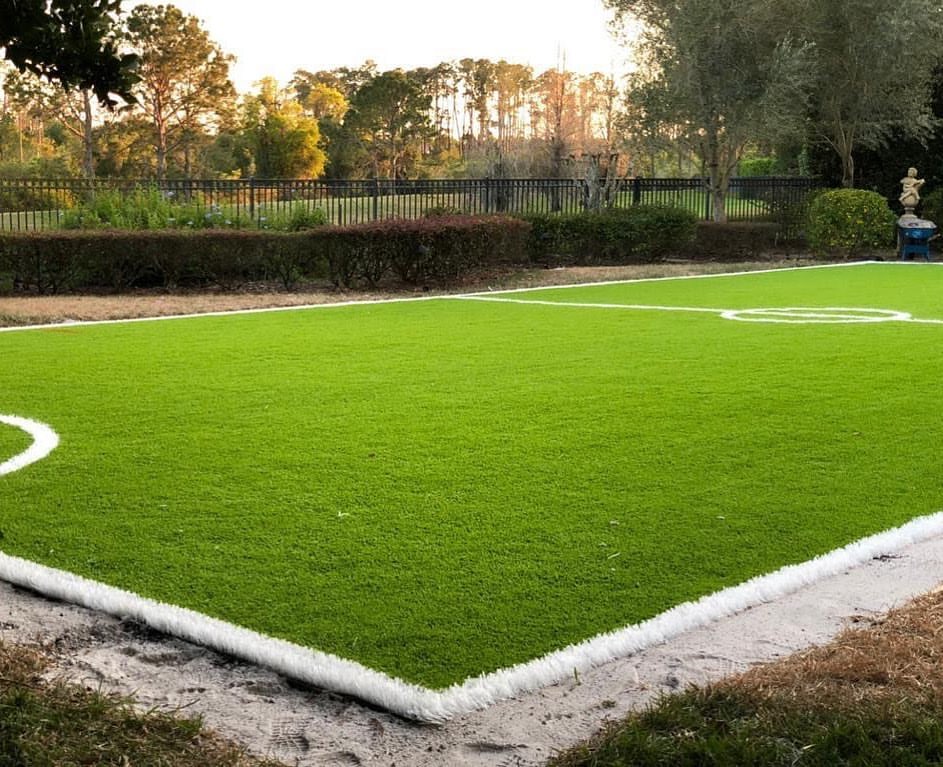Enhance Your Yard with High-Quality Mesa artificial turf for a Evergreen Green Look
Enhance Your Yard with High-Quality Mesa artificial turf for a Evergreen Green Look
Blog Article
Recognizing How Synthetic Grass Works for Your Home and Yard
Synthetic grass has actually become a useful solution for house owners seeking to enhance their outside rooms without the problems of traditional yard upkeep. Understanding its structure, setup process, and the various types available can reveal considerable benefits for both aesthetic appeals and performance. The effects of choosing synthetic turf prolong past plain look; they touch upon environmental factors to consider and lasting sustainability. As we discover these elements, one must consider just how this cutting-edge strategy can essentially change the landscape of home horticulture. What variables should you evaluate before making the transition?
Benefits of Synthetic Grass
Identifying the expanding appeal of synthetic grass, it is necessary to discover its countless advantages. Among one of the most significant benefits is the decrease in maintenance requirements. Unlike natural yard, synthetic grass does not need mowing, watering, or fertilizing, which equates to time and cost financial savings for homeowners. This low-maintenance option is specifically attractive in areas with minimal water resources, as it preserves water and reduces overall environmental influence (Artificial turf companies).
Furthermore, artificial lawn offers a continually green and lush appearance throughout the year, despite climate condition. This aesthetic allure enhances the aesthetic high quality of any kind of landscape, making it an attractive option for residential properties. Furthermore, synthetic turf is resilient and developed to withstand hefty foot traffic, making it a suitable remedy for households with animals and children.
Security is an additional important factor to consider; contemporary synthetic grass is often made from non-toxic products and incorporates shock-absorbing modern technologies, decreasing the danger of injuries during play. Lastly, fabricated turf is immune to weeds and pests, removing the requirement for chemical therapies, thus promoting a much healthier exterior atmosphere. Overall, the advantages of fabricated grass make it an engaging option for improving home and yard areas.
Setup Refine Overview
When thinking about the installment of fabricated lawn, a methodical method is important to ensure ideal outcomes. The installation procedure commonly begins with extensive website preparation, which involves clearing the location of any type of existing lawn, debris, and rocks. This action is vital for developing a steady and level structure.
Next, it is necessary to analyze the drainage capabilities of the location. Appropriate drain is vital to stop water merging externally, which might bring about premature wear or concerns with mold. This might require excavation and the installment of a drain system if needed.
As soon as the website is prepared, a base layer is installed, normally containing crushed stone or broken down granite, compacted to develop a strong surface. After accomplishing a smooth base, a geotextile material is put down to hinder weed development.
The final stage entails laying the fabricated grass itself. The turf rolls are placed, cut to fit, and safeguarded at the joints utilizing specialized or adhesive grass tape. Finally, infill products might be related to enhance stability and boost the overall look. Appropriately adhering to these actions will lead to a durable and visually pleasing fabricated grass installment.
Kinds Of Fabricated Turf

Among the key groups is household grass, which is often used in gardens, backyards, and play locations. This type normally includes a soft texture, making it risk-free for kids and animals. Industrial lawn, on the various other hand, is engineered for high-traffic areas, such as sporting activities areas and metropolitan parks. It uses durability and resilience, guaranteeing it endures rigorous use while keeping its look.
One more classification includes landscape turf, which resembles all-natural turf very closely to boost the aesthetic appeal of gardens and outside spaces. In addition, putting environment-friendly turf is particularly made for golf lovers, including a much shorter pile elevation and a smooth surface area for an optimal placing experience.
Last but not least, go to the website pet-friendly grass includes resilient materials and antimicrobial properties to guarantee a sanitary and risk-free atmosphere for pets. Choosing the ideal type of synthetic grass is critical for attaining the designated look and performance in your home and yard.
Maintenance Needs
Proper upkeep is essential for expanding the life-span and look of synthetic grass. Regular maintenance not just enhances aesthetic charm yet likewise makes certain ideal efficiency. The main upkeep jobs include cleaning, rinsing, and inspecting the turf.

Rinsing the turf with water helps eliminate particles, dust, and pet waste. Using a hose with a spray nozzle makes this task reliable and reliable. In locations susceptible to hefty rainfall, guarantee correct drain to prevent pooling.
Furthermore, regular assessments for problems, such as splits or loose seams, are crucial. Timely fixings can prevent much more considerable concerns and maintain the integrity of the turf. By sticking to these upkeep demands, house owners can delight in the elegance and performance of their synthetic grass for several years to find, making certain a lively and inviting outside area.
Ecological Factors To Consider
Man-made grass offers a complicated range of environmental factors to consider that require mindful assessment. Mesa artificial grass. While it minimizes the need for water, plant foods, and chemicals, which are commonly connected with natural lawn maintenance, there are significant worries regarding its disposal, use, and manufacturing
The production of synthetic grass entails petroleum-based products, raising inquiries regarding fossil gas consumption and greenhouse gas emissions. The setup process often requires a layer of infill, frequently composed of products like crumb rubber, which can launch harmful chemicals right into the atmosphere.

Disposal of synthetic grass presents an additional obstacle, as it is not naturally degradable and can add to garbage dump waste. Some recycling options exist, yet they are not widely offered or accessible.
Conclusion
In summary, view it now synthetic grass provides many benefits for residential and garden applications, including aesthetic allure, low maintenance, and safety for kids and pets. The setup process needs cautious factor to consider of water drainage, base products, and turf positioning to make read the article certain durability and effectiveness. Numerous kinds of fabricated lawn deal with different demands and choices, while ecological considerations highlight its potential sustainability benefits. Generally, artificial lawn works as a appealing and sensible option to all-natural turf in outdoor areas.
In general, the benefits of synthetic grass make it an engaging choice for boosting home and yard areas.
When taking into consideration the installment of synthetic lawn, a methodical strategy is essential to guarantee optimal results. The grass rolls are put, cut to fit, and secured at the joints making use of glue or customized lawn tape. Properly following these actions will result in a durable and aesthetically pleasing fabricated grass installment.
In recap, fabricated lawn presents numerous advantages for domestic and garden applications, consisting of visual allure, reduced maintenance, and security for pet dogs and youngsters.
Report this page